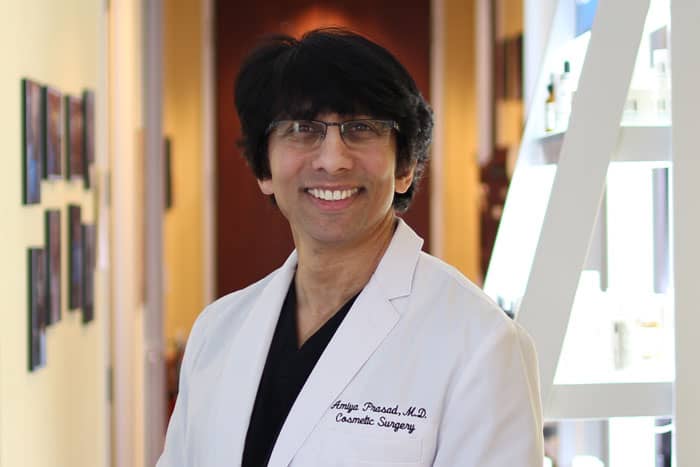How Safe is Under Eye Bag Removal Surgery?
(Unveiling Safety Standards and Practices)

Imagine a day when you don’t read headlines like “botched plastic surgery”. If you’re thinking about having surgery to remove under eye bags, you should be aware of some special safety concerns. In my clinic, I address three major risk-related concerns that clients have during an under eye bag consultation. The first is a risk to vision and eye health. The second risk is having an unsatisfactory appearance, and the last is health risk, which often refers to worries about anesthetic delivery. Before proceeding with surgery, you should have a thorough awareness of the risks involved.
In my practice, I perform lower eyelid procedures on a daily basis, including eye bag surgery. I also perform other cosmetic eyelid operations, including upper eyelid blepharoplasty for hooded eyes and double eyelid surgery for Asian patients. I also undertake eyelid procedures that are not normally performed by general plastic surgeons such as eyelid ptosis surgery, and eyelid retraction correction. I’m regularly approached to revise difficulties of under eye bag surgery initially performed by other surgeons.
What Causes Eye Bags?
Let’s start with an understanding of what causes puffy eyes. Simply put, puffy under eye bags are formed by fat compartments under the eyes protruding or herniating forward, giving the illusion of perpetual tiredness. Since these compartments are so close to the eye, it is critical to recognize the risk to your eye health and eyesight.
How Under Eye Removal Surgery is Done Safely
In my clinic, methods and procedures are in place to protect the eyes during surgery, ensuring that no damage occurs. As a doctor who was educated in ophthalmology or eye surgery before specializing in eye plastic surgery, I am acutely aware of the importance of safeguarding not only the eye, but also the surrounding tissues that allow the eye to operate properly.
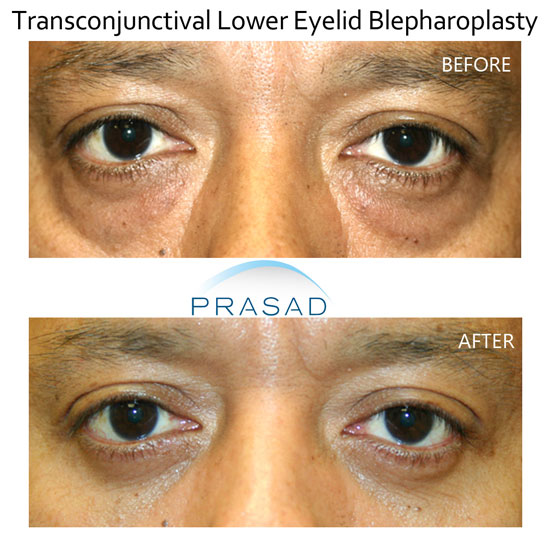
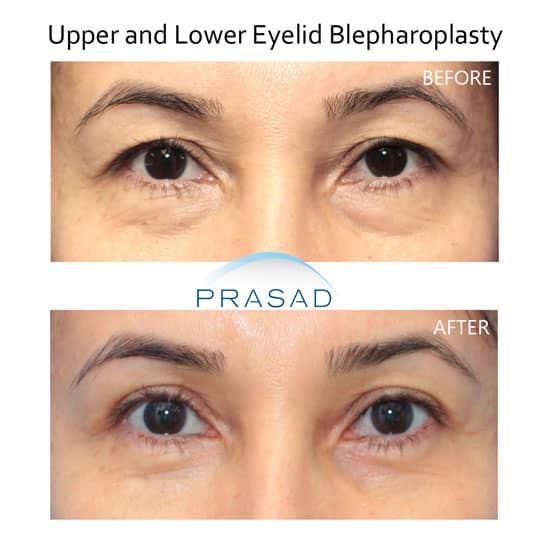
I frequently see patients who have undergone eyelid surgery elsewhere who developed issues such as eyelid retraction and ectropion. These are frequently caused by the removal of lower eyelid skin, which compromises the delicate support structures that keep the lower eyelid in place. Many of these consequences may have been averted with a fundamental understanding of oculoplastic principles. From a broader perspective, I consider eyelid surgery to be ocular or eye surgery. I often say that eyelids that look good function well.
Being concerned about the cosmetic result of any cosmetic procedure is natural. You do not want to make the major decision to get surgery just to later regret it. I find that most people who come to visit me want to appear better, while still looking like themselves. They frequently run down a list of well-known people whose eyes they dislike and want to avoid looking like.
I reassure them by showing samples of my patients’ before and after images that I place a high importance on retaining their individual character, and achieving a natural appearance. For example, the complications I discussed prior are usually connected with surgery performed from the outside of the eyelid known as transcutaneous blepharoplasty, often accompanied by eyelid skin removal in an attempt to treat wrinkles.
What is the better procedure for under eye bags?
The transconjunctival blepharoplasty procedure is what I perform in the majority of my lower eyelid surgeries. With this method, I keep the natural shape and character of your eyes, while avoiding many of the issues associated with traditional eyelid surgery. This is especially relevant for persons of various ethnicities who are concerned about visible scars and skin conditions such as keloids.
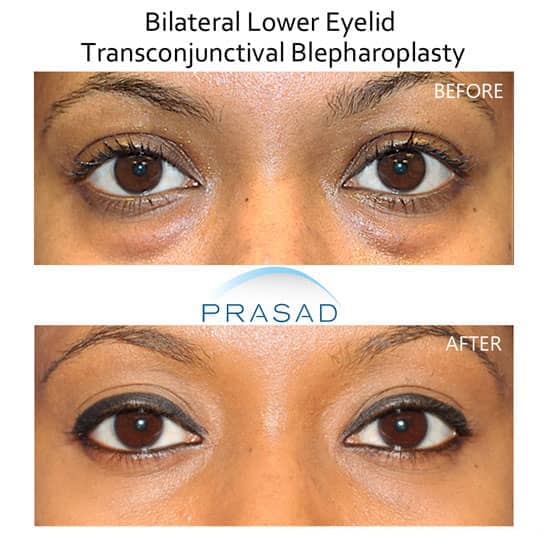
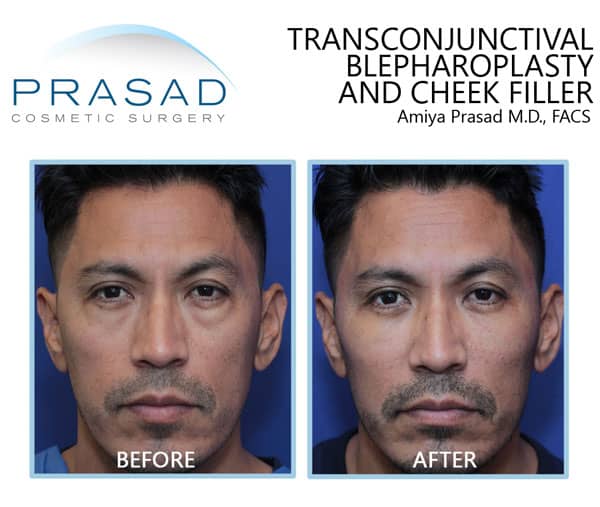
Taking it a step further, a natural and ideal appearance can be produced by combining operations like fractional laser resurfacing, PRP or platelet-rich plasma application, and cheekbone volume enhancement.
The bottom line is that outstanding results require a combination of technical skill and artistic ability. Cosmetic surgery is totally voluntary, so I believe the health risks should be as minimal as possible.
Many of my colleagues choose to do all of their surgeries under general anesthesia. General anesthesia is a way in which you are asleep and paralyzed,so you have to breathe through a tube in your throat hooked to a mechanical ventilator. Although general anesthesia can be administered safely, you are still at risk of experiencing common side effects such as nausea, vomiting, constipation, brain fog, and a protracted recovery period.
Coming from an eye surgical background where we did surgery inside the eyes using local anesthesia and sedation, it made intuitive sense to me to apply the same anesthesia for cosmetic eyelid surgery. In my practice, I routinely perform cosmetic eyelid surgery under local anesthesia and LITE IV sedation. Our patients are at ease throughout their procedure, and feel great shortly afterwards. They usually have no adverse effects from the anesthetics or anesthesia, and feel like themselves immediately after surgery. I often see our patients after one week, when they are usually ready to return to work with little to no bruising.
So, in response to the question “how safe is eye bag surgery”, I should emphasize that eyelid surgery is unique as a cosmetic procedure because it can have an impact on eye health and vision. I can attest to the effectiveness of my systems in minimizing risk, while optimizing results and recovery. I hope this information from my experience was helpful to you.

Under Eye Bag Removal Manhattan, NYC and Long Island, New York
Dr. Amiya Prasad is a Diplomate of the American Board of Cosmetic Surgery, and a Fellowship-trained oculofacial plastic and reconstructive surgeon. He has been in practice in New York City, and Long Island for over 25 years.
If you’d like to receive recommendations for your specific situation, please fill out the form below, or contact any of our offices: (212) 265-8877 for Manhattan, (516) 742-4636 for Garden City Long Island Office, or (703) 356-1336 or (703) 821-2683 for Vienna, Virginia to schedule a consultation.

